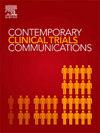通过增加临床试验的多样性来减少不平等现象——对医疗设备和药物和治疗方法同样重要
IF 1.4
Q4 MEDICINE, RESEARCH & EXPERIMENTAL
引用次数: 0
摘要
在医学和公共卫生领域,随机对照试验(RCT)通常被认为是“黄金标准”证据的关键来源。然而,基础和临床研究和试验往往不能代表现实世界的人群。在试验中招募不够多样化的参与者(例如,在社会经济地位、种族和民族背景或性别方面)不仅可能夸大了一项技术的总体有效性;它还可能积极地加剧保健不平等。在讨论医疗设备背景下的几个具体说明性示例之前,我们将重点介绍该领域的一些一般问题。关于可改善试验招募的因素的高质量证据极为有限。显然有必要研究候选人策略,以改善随机对照试验中代表性不足群体的招募。这些措施可以包括,例如,提供各种形式的财政奖励;非金钱奖励,例如,如果发现正在试验的技术是有效的,可以优先获得这些技术;以及各种类型的信息信息和提示;以及社区合作伙伴和支持者在招聘过程中的参与。理想情况下,招募实践最终应该基于随机对照试验产生的证据。在随机对照试验(RCTs)中,随机实验被纳入实际的招募过程,这是获得这一证据的理想方式。正如英国国立卫生研究院等机构的资金流所表明的那样,SWAT研究的吸引力正在增加。需要为这类研究提供更多的资金,以改善关于如何最好地改善试验招募多样性的证据基础。本文章由计算机程序翻译,如有差异,请以英文原文为准。
Reducing inequalities through greater diversity in clinical trials – As important for medical devices as for drugs and therapeutics
In medicine and public health, the randomised controlled trial (RCT) is generally considered the key generator of ‘gold standard’ evidence. However, basic and clinical research and trials are often unrepresentative of real-world populations. Recruiting insufficiently diverse cohorts of participants in trials (e.g. in terms of socioeconomic status, racial and ethnic background, or sex and gender) may not only overstate the general effectiveness of a technology; it may also actively increase health inequalities. We highlight some general issues in this domain, before discussing several specific illustrative examples in the context of medical devices. High quality evidence on factors that would improve trial recruitment is extremely limited. There is a clear need for research on candidate strategies for improving recruitment of under-represented groups in RCTs. These could include, for example, offering various forms of financial incentives; non-monetary incentives, such as preferential access to the technologies that are being tested if they are found to be effective; and various types of informational messages and nudges; as well as involvement of community partners and champions in the recruitment process. Ideally, recruitment practices should ultimately be based on evidence generated from RCTs. Studies Within a Trial (SWAT), where randomised experiments are built into the actual recruitment processes in RCTs, are an ideal way to gain this evidence. SWAT studies are seeing an increase in traction, as indicated by funding streams in bodies such as the UK-based NIHR. Making greater funding available for studies of this kind is needed to improve the evidence base on how best to improve diversity in trial recruitment.
求助全文
通过发布文献求助,成功后即可免费获取论文全文。
去求助
来源期刊

Contemporary Clinical Trials Communications
Pharmacology, Toxicology and Pharmaceutics-Pharmacology
CiteScore
2.70
自引率
6.70%
发文量
146
审稿时长
20 weeks
期刊介绍:
Contemporary Clinical Trials Communications is an international peer reviewed open access journal that publishes articles pertaining to all aspects of clinical trials, including, but not limited to, design, conduct, analysis, regulation and ethics. Manuscripts submitted should appeal to a readership drawn from a wide range of disciplines including medicine, life science, pharmaceutical science, biostatistics, epidemiology, computer science, management science, behavioral science, and bioethics. Contemporary Clinical Trials Communications is unique in that it is outside the confines of disease specifications, and it strives to increase the transparency of medical research and reduce publication bias by publishing scientifically valid original research findings irrespective of their perceived importance, significance or impact. Both randomized and non-randomized trials are within the scope of the Journal. Some common topics include trial design rationale and methods, operational methodologies and challenges, and positive and negative trial results. In addition to original research, the Journal also welcomes other types of communications including, but are not limited to, methodology reviews, perspectives and discussions. Through timely dissemination of advances in clinical trials, the goal of Contemporary Clinical Trials Communications is to serve as a platform to enhance the communication and collaboration within the global clinical trials community that ultimately advances this field of research for the benefit of patients.
 求助内容:
求助内容: 应助结果提醒方式:
应助结果提醒方式:


